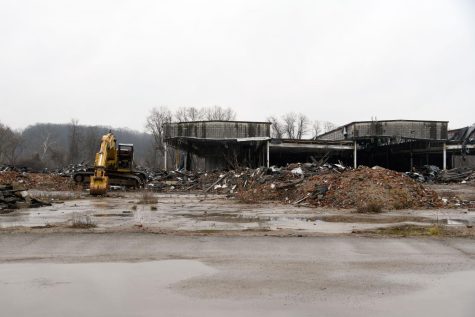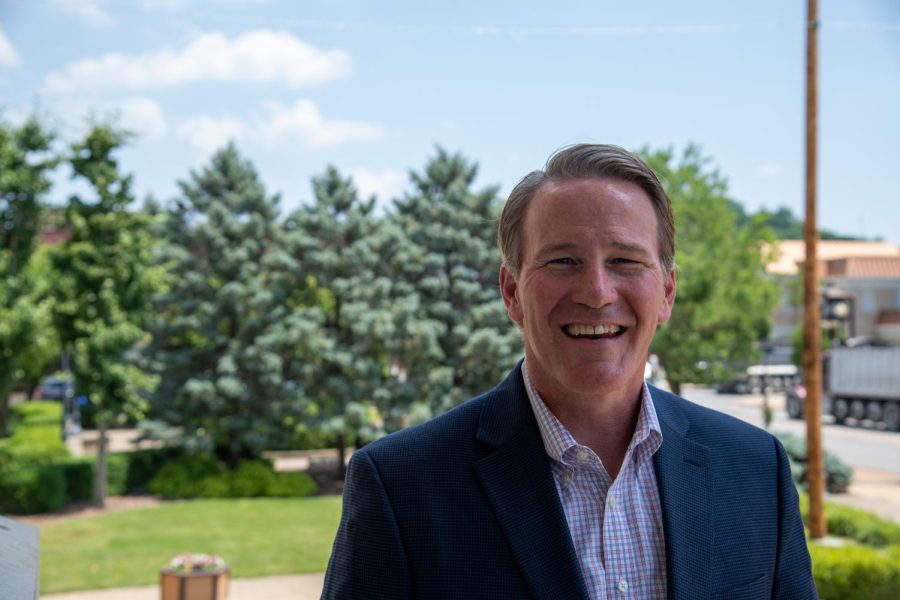Lt. Governor Husted: 150,000 jobs in Ohio paying over $50,000/year go unfilled
June 29, 2022
During an announcement last Wednesday, when the Lt. Governor was in town to bring news of the allocation of funds to clean up and raze one former industrial site in Zanesville and redevelopment a closed elementary school, he stated a startlingly statistic, with only 40,000 individuals still on unemployment in Ohio, 150,000 open positions, all paying over $50,000 a year, remain unfilled.
In total, according to OhioMeansJobs, there are 250,000 open positions in the state, a figure that often hurts officials when trying to lure companies to the Buckeye State or convince them to return their plants stateside with American workers.
As has been reported extensively by national publications, beginning in the 1970s, many American companies, seeking higher quarterly returns and a less unionized workforce, moved factories outside of the country to locations such as Mexico and China, and with it, jobs that often only required one member of a household to work, affording many a middle-class lifestyle without anything more than a middle school or high school education.
As thousands of factories closed, families found themselves making far less. It was around that time that many women entered the workforce in droves across America, a trend that often only occurred during wartime, this time as a means to make up for lost wages.
Touted as a positive move that would afford the average American cheaper goods, real wages became stagnated as the divide between productivity and income became more and more separated in the last quarter of the 20th Century.
Locally, thousands of good-paying jobs evaporated, as those who owned factories in Zanesville and around the region opted to move production lines not just out of the state, but out of the country.
In the last 50 or so years many around Muskingum County began traveling west to cities like Columbus for higher wages that would afford them a more sustainable income to raise a family.
A recent hike in the price of gasoline is making those often one-way hour-long commutes more and more expensive as many start to calculate whether or not the extra wages they earn out-of-county are being entirely eaten up by their fuel tank.
Zanesville-Muskingum County Port Authority Executive Director Matt Abbott has previously told Y-City News his agency, for example, has tried to help residents compute the time value of commuting and the fuel costs of driving west to places like Etna to work at Amazon verse working closer to home.

As reported by Y-City News, Ohio Lt. Gov Jon Husted was recently in town to announce the funding of the cleanup of the Mosaic Tile building adjacent to the Muskingum County Fairgrounds. The former industrial site’s last owners chose to close the location down in favor of shipping its production line out of the country while making its investors higher returns at the loss of good-paying American jobs.
Oftentimes, as Husted explained when questioned why those same companies aren’t held accountable and made to clean up the sites themselves, sell the properties to other owners when they close down a factory.
“The original owner sells it to someone, that owner forms basically a shell corporation, then they go in and take everything that is valuable out,” said Husted. “They strip out all the building materials and metals, things like that, they sell them off then just declare bankruptcy. You can’t go back and get at them (the original owner).”
That is exactly what happened with the Lear property along Linden Avenue in Zanesville. In 1995, the corporation that ran it had 1,200 hourly union employees working in Zanesville. In 2008, those who remained lost their jobs when they were shipped to Mexico.
The former owners essentially got away scot-free, reaping the benefits of operating in America, such as tax abatements and an educated workforce, paid for mostly by locals, but were not required to clean up the environmental damage they did to the site. Once another owner took control, they did just as Husted said happens all around the country, they gutted it of anything valuable and then let the site fall into further unmanaged decay.
Some towns work proactively to make the historical structures into apartments or spaces for businesses, however, that often only happens in larger towns where there are the commercial rental rates that motivate private industry to rehab the site for economic gain.
Along Linden Avenue those new owners removed exterior bricks that ultimately made the structure unsafe for occupancy, all but ending any change to keep the site as a historic relic that could have also housed residents or new thriving businesses.
In the end, it was local officials using tax dollars allocated from the Federal Government, as part of the COVID-19 stimulus, nearly one million dollars, to remedy the site, money that could have gone to other beneficial uses if the town wasn’t ultimately responsible for clean up.
“It frustrates me and I think it’s wrong,” said Husted. “But that’s the reality at some of these sites that we’re dealing with and so we can be mad about it or we can do something about it and that’s why we set aside some of these Brownfield dollars to go in and clear these places up. Turn them into higher use, higher-quality properties that otherwise would have gone missing, but it does take a private-public partnership to do that.” To much local disappointment, that won’t be the case for Munson Elementary or the Mosaic Tile building, funding will go only to razing the structures.
Looking forward, Husted spoke about the number of ‘good-paying’ jobs that are currently available ‘at this very moment.’
Ohio scored big when it secured Intel, bringing nearly 3,000 high-paying jobs to western Licking County.
Part of that securement was assuring Intel that Ohio would be capable of preparing an adequate workforce. That includes a collaborative effort from large institutions like Ohio State to regional ones like Mid-East Career and Technology Centers.
The difficulty, according to Husted, in attracting spur-off development from the Intel site, is having an educated and agile workforce. If successful, Husted added, those other companies will also bring ‘very comfortable salaries’ and career-style jobs.
When companies began shifting jobs out of the country, many responded by pushing college as a solution, building up what is referred to as a shift to a knowledge and creator society. It worked in regard to developing America’s dominance in the tech industry but left a large vacancy in the trades as the country began to stigmatize blue-collar jobs that we are relearning are the backbone of the economy.
According to OhioMeansJobs, there are roughly 250,000 open positions in the state at this very moment, not including, for example, the 3,000 or more jobs Intel will bring. Of those, 150,000 pay $50,000 a year or more. There are only 40,000 individuals still on unemployment in the state.
That will require connecting Ohioans with open positions, preparing high school graduates for existing and future jobs that will come into existence over the next generation and attracting talent to the state that is critically needed for it to continue to grow, Husted added.
“So that means we got to do a great job with our education system, graduating more high school students with career skills, not college-ready skills but career skills,” said Husted. “College is great but we need both because there are job opportunities on day one (for graduating seniors).”
Part of the process of bringing jobs back statewide, mentioned by Husted but also leaders across the political spectrum, is subsidies that rival what foreign counties offer their businesses.
The CHIPS Act, a bipartisan proposal at the federal level, for example, would give American producers roughly $52 billion in subsidies to make components like silicon wafers and advanced computer chips in the Contiguous United States once again, something nearly everyone agrees is needed to protect the national security interest of the country.
“If we don’t get that it will inhibit what potential growth we will have from Intel and other chip companies that are looking at Ohio,” Husted added.
On Saturday, Intel accounted they were delaying the ceremony for its Ohio factory over lack of movement on the CHIPS Act and government financial support.
Abbott said that he, along with many state, county and city officials, are working around the clock to identify and secure any businesses to Muskingum County that will support Intel and or any company that will use the various chips produced at the Ohio foundry in their down-line production.














